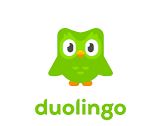Key Facts
- Think in Italian offers comprehensive resources like grammar lessons and audio, designed by an experienced Italian teacher, making it a top choice for learners.
- Pimsleur focuses on pronunciation and useful vocabulary through audio lessons, but lacks detailed explanations, making it ideal for beginners wanting to improve speaking skills.
- Duolingo is a popular, free app that gamifies language learning, appealing to beginners, but varies in lesson quality due to community contributions.
- Rocket Italian provides a well-rounded course with audio and cultural lessons, suitable for various learning styles, but is only available online.
THE BEST WAY TO LEARN ITALIAN
Think in Italian

Think in Italian (previously called Fluent Simple) is definitely the best online Italian course. It includes grammar lessons, audio lessons, articles, stories, and blog posts about Italy. It was designed by an Italian teacher called Stefano.
You should check out Leggi con me. It includes a collection of news, short stories, and conversations with bilingual texts and audio.
You could also try Impara con Me, which is a big collection of Italian audio lessons and short readings organised by level with audio, Italian transcripts, and English translations. This will help you improve your listening, speaking, and reading skills.
Also, Stefano developed an interesting method to learn a foreign language: Ripeti con Me. This is a great method to learn Italian using spaced repetition, which is an effective method to develop your listening skills.
You’ll basically hear the same words in different contexts. After some time, you will get used to all these words and will start using them in a rather natural way. Also, you will hear grammar structures all the time without even realising it, meaning you won’t be overwhelmed with lots of grammar rules.
Pros
With its focus on speaking, you will pick up words and grammar naturally without really studying.
Cons
Some options aren’t free but they’re worth paying for since they have reasonable prices. And sometimes we get more motivated to learn if we know we have already paid.
Pimsleur Italian audio courses
Pimsleur is a great option for beginners who want to get used to the sounds of Italian.
There are two main ideas behind Pimsleur:
- Useful vocabulary: people use around 2000 words in every-day life, so if you know these you’ll be able to get along quite well. Each Pimsleur level teaches more or less 500 words over 16 hours.
- Spaced repetition: you’ll be asked to recall new words quite often, with intervals getting longer and longer.
Like Rosetta Stone, Pimsleur doesn’t give you many explanations. There is just an English-speaking narrator who points things out from time to time. So, if you want to become fluent, you should get another book or course to go along with your Pimsleur course.
Having said that, Pimsleur will definitely help you improve your pronunciation. You will spend a lot of time repeating words that your pronunciation will be great if you try to imitate their pronunciation. This means that even if you will not learn many words, at least you’ll be able to say them correctly.
Pros
Since lessons are audio lessons you can listen to them anywhere. It’s very good if your goal is to improve your pronunciation and you say words out loud.
Cons
It’s quite boring and with little explanation. It doesn’t teach you much about the structure of Italian, so if you want to be fluent you will definitely need a textbook or another course.
Duolingo
Duolingo is probably one of the most popular apps to learn languages and the content is quite good. This is why Duolingo still ranks among the best software for learning a language.
It offers lots of self-paced exercises to help you build an understanding of one (or more) of the 34 languages it offers or review one you already speak.
The target market of Duolingo is beginners, so if you’re a beginner it’s a great choice.
Duolingo is all about gamification. The design is modern, colorful, visual, and creative and keeps you involved and motivated. When you learn on Duolingo, you earn experience points. You earn these points by completing individual lessons, placement tests, checkpoint quizzes, skill practice, tests, and stories.
While you’re using the app, it will cheer you for moving to the next step. Along the journey, you will gain lingots, gems, streak, and crowns.
The gems and lingots are virtual currencies in Duolingo. The gems are available on mobile apps, while lingots are only accessible on a computer.
You will get these rewards when achieving goals like crossing levels, finishing a skill, translation, 10-day streaks, etc.
Pros
It is absolutely free and you can access everything. And that’s what makes it very attractive.
Cons
Since community users volunteer to give explanations, lessons vary in quality and there is no learning structure.
Rocket Italian
Rocket Italian is a very effective Italian course and is also good value for money,
There are three courses. There’s a 33-lesson audio course with the basics of Italian. Then there’s a course called “Language and Culture” which helps you become more fluent since it goes into more depth. Finally, there’re lots of testing tools to help you improve your pronunciation, memory, and confidence.
The audio course is very fun and informative. Each lesson is around 20 minutes long, which is great for learning some Italian on your way home from work.
As you can probably tell, information in Rocket Italian is presented in different ways, meaning it’s suitable for all learning styles.
Pros
Great price and value. Suitable for all learning styles. It includes both an audio course and a grammar course, meaning you don’t have to buy them separately.
Cons
It’s only available online.
Rosetta Stone Italian
The great thing with Rosetta Stone is that you don’t have to sit down and learn any grammar. Many people hate grammar, that’s why Rosetta Stone can be very attractive.
Rosetta Stone is fun. You’ll learn some vocabulary, and you’ll have the feeling that you’re making good progress, which will make you stay motivated.
The problem is that it is based on an “acquisition” model that doesn’t really explain the rules of Italian. It just shows you pictures and you have to select the right answer.
There are many concepts that cannot be explained with a picture. So you won’t be able to talk about more complex ideas. You’ll be limited to sentences like “the man drinks water.”
Rosetta Stone may give you some useful vocabulary and sentences, but it won’t be enough to survive in Italy.
In other words, it’s an advanced flash-card software. However, you’ll need another course to complement what you learn.
Pros
It’s like a game, so it’s fun. It’s a good option for visual learners and people who don’t like grammar. It’s not very challenging, so it’s easy to stay motivated.
Cons
It won’t make you fluent. Plus it’s expensive and it doesn’t explain conjugations or gender agreement, which means you’ll probably make mistakes. No references to Italian culture.
Michel Thomas Italian
Michel Thomas was a Polish polyglot who spoke 10 languages. These lessons are audios of him teaching two students.
Michel Thomas starts by teaching you a basic word or phrase, and gradually adds more words until you build a more complex sentence. For example, one of the Italian lessons starts with the Italian equivalent for “possible” and after some minutes you’re able to say the Italian equivalent for “I’m sorry but it’s not possible for me”.
Michel Thomas explains important rules about grammar and vocabulary and links them with material you’ve already learned.
Michel Thomas moves at a rapid pace, teaching new material on top of old material. Some people complain that the two students get irritating and slow by the end as they make silly mistakes, and that Mr. Thomas has a strong accent which leads to misunderstandings.
Pros
It’s interesting to listen to. Things are explained as you learn them, so it’s easy to follow and understand the explanations. You’ll learn to build complex sentences and used them in different contexts.
Cons
It moves very fast so it can be overwhelming. You might need to listen to certain words many times. Michel Thomas’s pronunciation isn’t very authentic since he is not a native Italian speaker.





